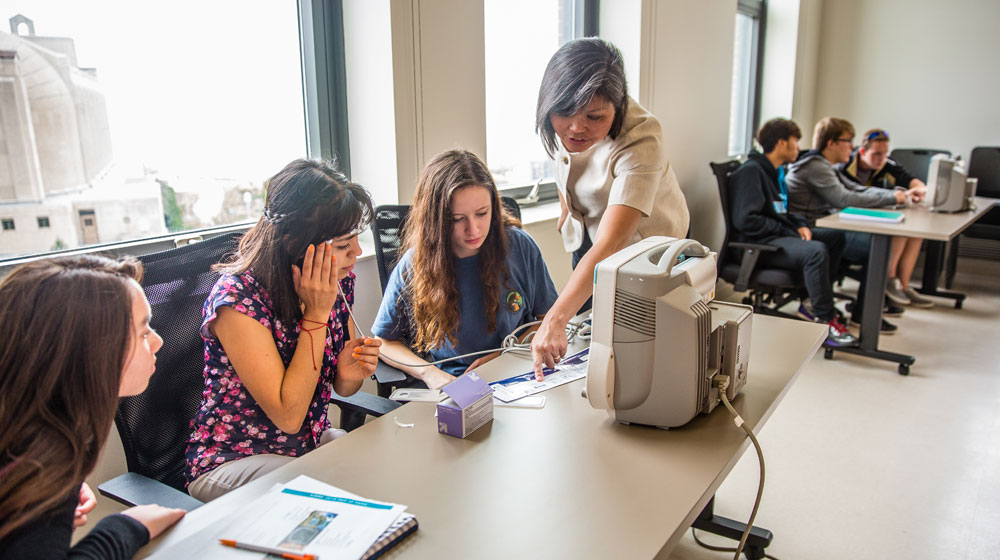Overview

Loyola’s BS in Engineering program offers students a chance to study engineering at a nationally respected Jesuit university in the world-class city of Chicago.
We are honored by being ranked #39 (out of 239) by our peers in the 2022 U.S. News and World Report list of Best Undergraduate Engineering programs, the first time (2021) we are eligible to be on the list. New Engineering programs cannot participate until they receive ABET accreditation, which we received in Fall, 2020.
Loyola Engineering is also the first program in the U.S. to fully integrate engineering and social justice in its curriculum, and #6 (out of 429) in ASEE's (American Society for Engineering Education) 2020 Institutions by Percentage Bachelor's Degrees Awarded to Women. Fifty-two percent of our Class of 2020 graduates were women. We were not eligible to participate in the ASEE survey until we received ABET accreditation.
A hallmark of our program is our emphasis on active learning. Rather than delivering a full lecture in each course, each professor provides a mini-lecture to go over fine points of the homework. The class then breaks into small groups of 3-4 students, and conducts group activities (problem-based, collaborative, or service learning). To facilitate active learning, there are never more than 24 students in any Engineering course section. You can learn more about our active learning methodology, which facilitates student engagement and engineering retention, here.

